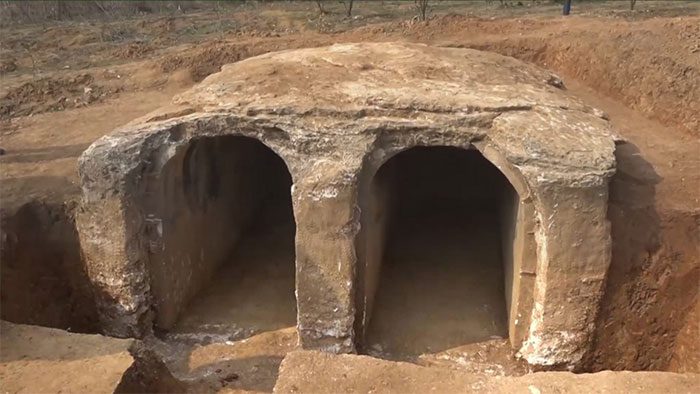Chinese Archaeologists Discover an Aristocratic Tomb from the Ming Dynasty (1368 – 1644) in Lixian County, Hunan Province.
Video: Xinhua
According to researcher Tan Yuanhui from the Hunan Institute of Cultural Heritage and Archaeology, the tomb features two burial chambers with a curved top, filled with murals, patterns, and symbols representing good fortune. Due to subsequent dynasties plundering the site, no coffins or burial objects were found in the excavation area. The discovery was announced on March 8.
However, based on assessments of the shape, size, and the murals found, the owner of the tomb is likely to belong to the aristocracy, individuals of economic power and social status.
Archaeological tombs with murals are rarely found in southern China (mostly excavated in the north). Therefore, the new discovery in Hunan has helped fill the gap regarding mural tombs in the Lishui River basin, providing valuable insights for future archaeological investigations in the northwestern mountainous area of Lixian County, while also offering important archaeological data for studying folk customs and burial practices in the Lishui River basin during the Ming Dynasty.

Ming Dynasty aristocratic tomb in Hunan Province, southern China.
Archaeologists have now completed 3D scanning to collect data and protect the tomb on-site.
“Last year, while conducting a survey of cultural relics in the northwestern mountains of Lixian, we learned about this tomb from the villagers and immediately began efforts to protect it. In February this year, the Hunan Institute of Cultural Heritage and Archaeology sent experts to excavate alongside us,” Zhou Hua from the Lixian Archaeological Research and Cultural Heritage Protection Center stated.





















































